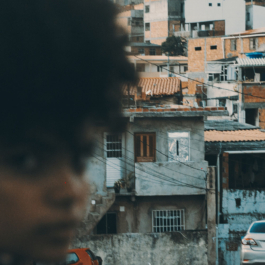Culture
Bold, Brilliant Brazilian: 10 Classics Of Brazilian Film
Slide Nr 1From its vast natural beauty and near-magical football team, to its festivals that capture the imagination of the world, South America’s largest country is known for many things – but being a world cinema powerhouse isn’t one of them. It may surprise some film lovers, then, that Brazil possesses a rich history of filmmaking. Join us as we walk you through ten films celebrating stories that are uniquely, beautifully Brazilian.
0/10
Culture
Bold, Brilliant Brazilian: 10 Classics Of Brazilian Film.
Slide Nr 2City of God (Cidade de Deus, 2002) – Perhaps one of the most famous and celebrated films ever to come out of Brazil. Fernando Meirelles and Kátia Lund bring to life the economically depressed City of God neighbourhood in Rio de Janeiro, and the differing paths two friends take as the threat of violence hangs over their most innocent of years. While some residents of the real-life area questioned the benefit of the film’s success, it is an astonishing and powerful look at life away from the tourist centres postcard-perfect travel ads, with a legacy so great it has inspired a sequel, a TV series and a 10-year anniversary documentary.
1/10
Culture
Bold, Brilliant Brazilian: 10 Classics Of Brazilian Film.
Slide Nr 3The House of Sand (Casa de Areia, 2005) – A glorious meditation on loss and renewal, boosted by a special connection between its stars. Filmed in Northern Brazil, a pregnant woman (Fernanda Torres) and her mother (Fernanda Montenegro) learn to start again after the death of her father leaves them stranded in the desert. Torres has an excellent rapport with real-life mother Montenegro, and the film shows a side to Brazil not often portrayed in cinema. A big hit at the Sundance Film Festival, it remains an underrated gem that’s well worth checking out.
2/10
Culture
Bold, Brilliant Brazilian: 10 Classics Of Brazilian Film.
Slide Nr 4Central Station (Central do Brasil, 1998) – Fernanda Montenegro stars again in a film that launched the Brazilian acting legend to international stardom at the age of 69. Considered one of the greatest actors in the country’s history, Montenegro grabbed the attention of English-speaking audiences with the breathtaking portrayal of a retired schoolteacher who reluctantly befriends and takes in an orphaned young boy. Based around the busy titular station, it is a heart-warming story about confronting the past and hoping for a better future. No wonder, then, that Montenegro remains the only Brazilian actress to be nominated for an Oscar based on her performance.
3/10
Culture
Bold, Brilliant Brazilian: 10 Classics Of Brazilian Film.
Slide Nr 5Divine Love (Divino Amor, 2019) – It’s often said that futuristic science fiction is more a commentary about the time it was written in than a prediction of where we’re going (George Orwell’s 1984 is more about post-war Europe, for example). In that sense, Divine Love is a fascinating examination of modern-day Brazil and the delicate balance between church and state. Imagining a near future where religion has a greater say over law-making, director Gabriel Mascaro examines the nature of love and desire in a way that feels accessible and unmistakably human. Instead of forcing ideas, the film intrigues us by asking questions.
4/10
Culture
Bold, Brilliant Brazilian: 10 Classics Of Brazilian Film.
Slide Nr 6The Given Word (O Pagador de Promessas, 1962) – A simple act of devotion is manipulated by the outside world in the only Brazilian film ever to win the prestigious Palme d’Or. The ‘given’ part of the title belongs to a simple farmer (Leonardo Villar) who swears to a saint that if his best friend, a donkey, recovers from illness, he will carry a cross 29 miles as an offering. Once the animal recovers and his promise must be fulfilled, many suspect the honest man’s intentions, putting their own meaning on it. A sparkling morality play that speaks to the dangers of hysteria.
5/10
Culture
Bold, Brilliant Brazilian: 10 Classics Of Brazilian Film.
Slide Nr 7Black God, White Devil (Deus e o Diabo na Terra do Sol, 1964) – Some films just have to be witnessed to be understood. This striking pioneer of the 1960s Cinema Novo movement, which spoke to socio-political issues of the time, draws upon Afro-Brazilian influences to offer a shocking but impactful fable about an outlaw who takes to the road with a self-proclaimed saint. Rich with references to Brazilian history, it is often high on the list when talking about the greatest movies to ever come from the country.
6/10
Culture
Bold, Brilliant Brazilian: 10 Classics Of Brazilian Film.
Slide Nr 8Elite Squad 2: The Enemy Within (Tropa de Elite 2: O Inimigo Agora é Outro, 2010) – When looking at film industries outside of Hollywood, there is a tendency to only focus on independent, award-seeking dramas. However, Brazil also has a strong history of commercial ‘popcorn’ movies, none more so than this drama about corruption within the police force and its connection to the world of politics. The most domestically successful Brazilian film ever, the film’s fast pace and hard-hitting action mean that over a decade later, fans still clamour for a sequel. Viewers outside of Brazil will also thank the movie for launching the career of Wagner Moura, who would go on to play Pablo Escobar in Netflix show Narcos.
7/10
Culture
Bold, Brilliant Brazilian: 10 Classics Of Brazilian Film.
Slide Nr 9Twenty Years Later (Cabra Marcado Para Morrer, 1984) – A true test of the power of any artwork sometimes lies in the reaction of those it set out to portray. This documentary is born from struggle, talking about the fight to make a 1964 biopic about political leader João Pedro Teixeira, a production that was shut down by a military dictatorship. As the title suggests, director Eduardo Coutinho returns to the scene of the film to tell not the original story, but the account of its demise. A fascinating look at the clash between art and power.
8/10
Culture
Bold, Brilliant Brazilian: 10 Classics Of Brazilian Film.
Slide Nr 10Boy and the World (O Menino e o Mundo, 2013) – It’s funny how animation, a format generally considered for younger audiences, has a way of delivering very complex emotions. Featuring dialogue that is in fact Portuguese spoken backwards, this animated feature is a firework display of song, art and life, as we follow a young boy on his journey to find his father. Although nominated for an Oscar, it is a lesser-known classic that more people (of all ages) should fully embrace.
9/10
Culture
Bold, Brilliant Brazilian: 10 Classics Of Brazilian Film.
Slide Nr 11Waste Land, 2010 – The title and broad subject matter of this documentary might lead you to believe it is a story that depicts Brazil in a negative light, but Waste Land actually finds a way of turning a very global problem into a story of hope. We follow a group of catadores – waste pickers who search for recyclable materials in the world’s largest landfill just outside of Rio de Janeiro. Using the waste to make modern art brings them from the dump to the auction house, challenging perceptions of both the people and the materials. A collaboration with a New York artist, featuring music by Moby, makes for an uplifting story of dignity and hope.
10/10
















Sorry, the comment form is closed at this time.